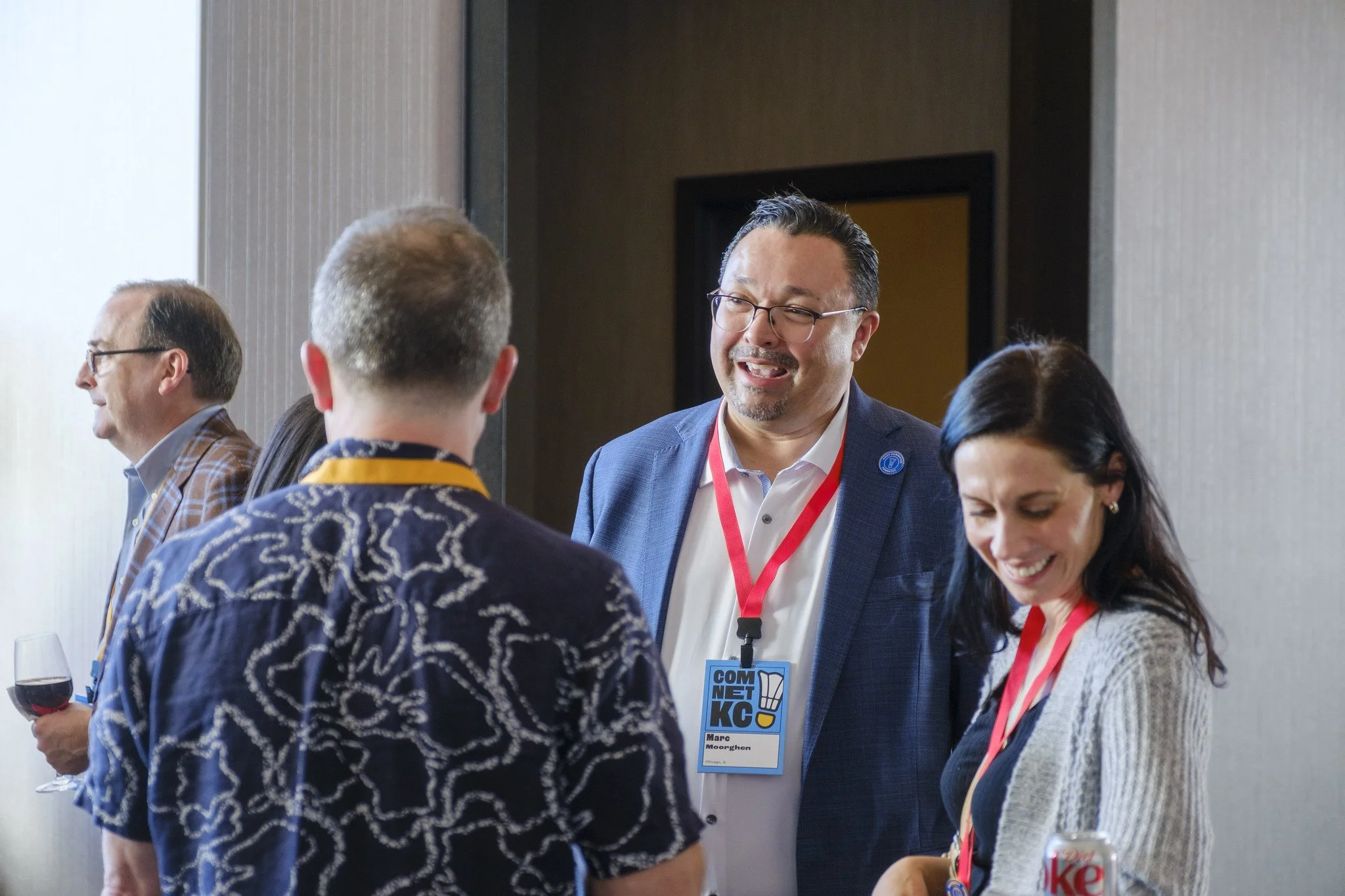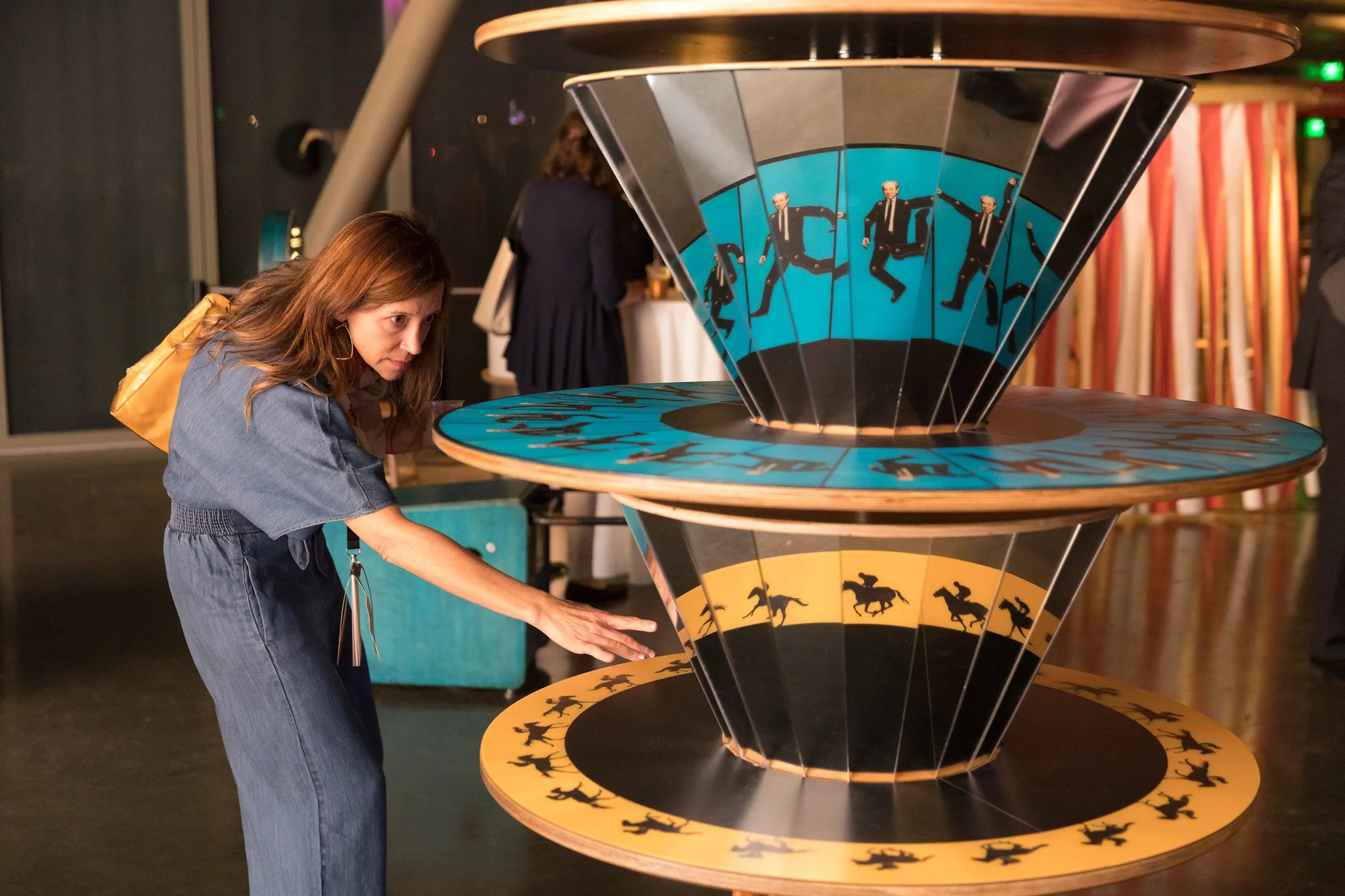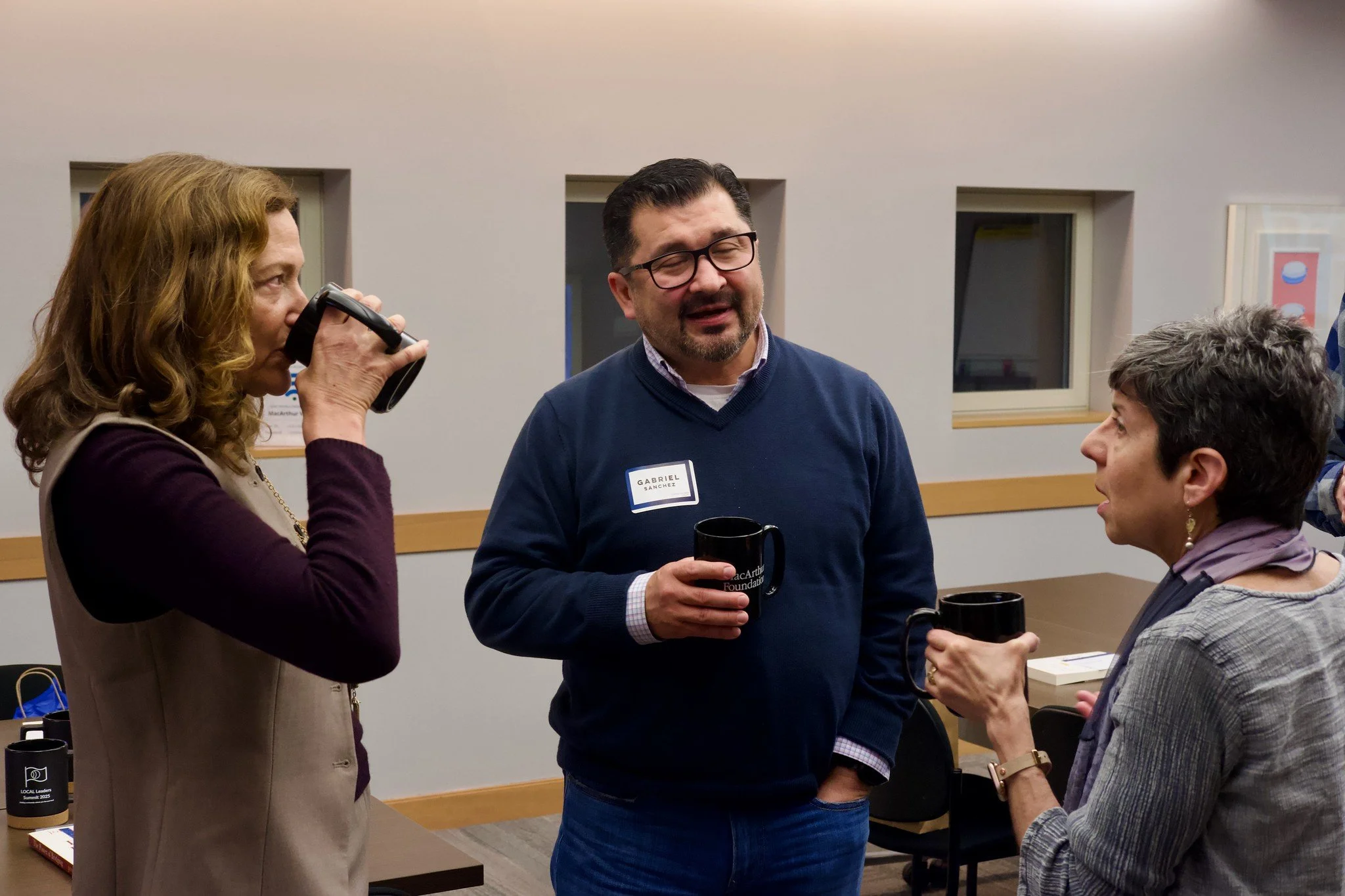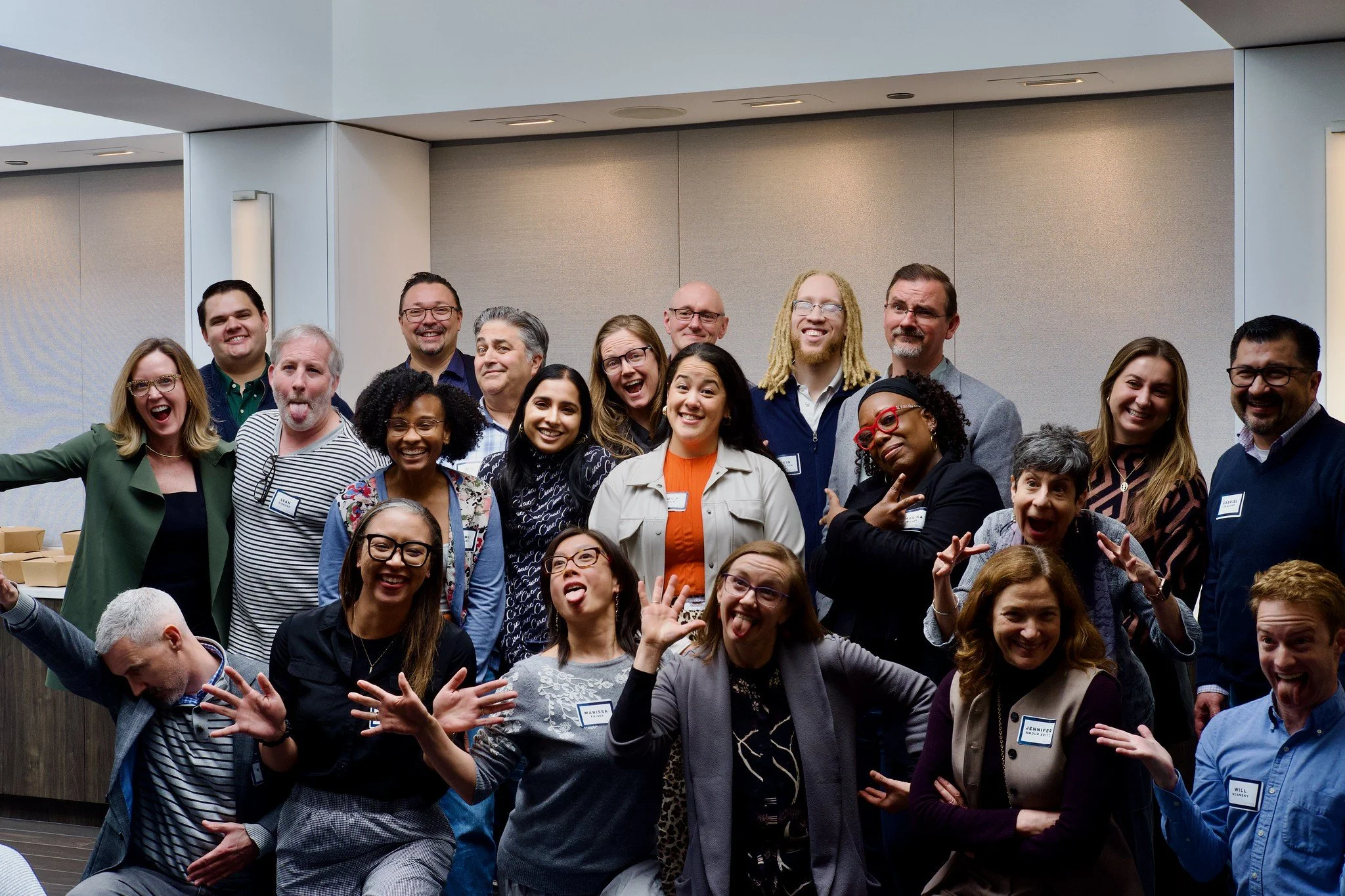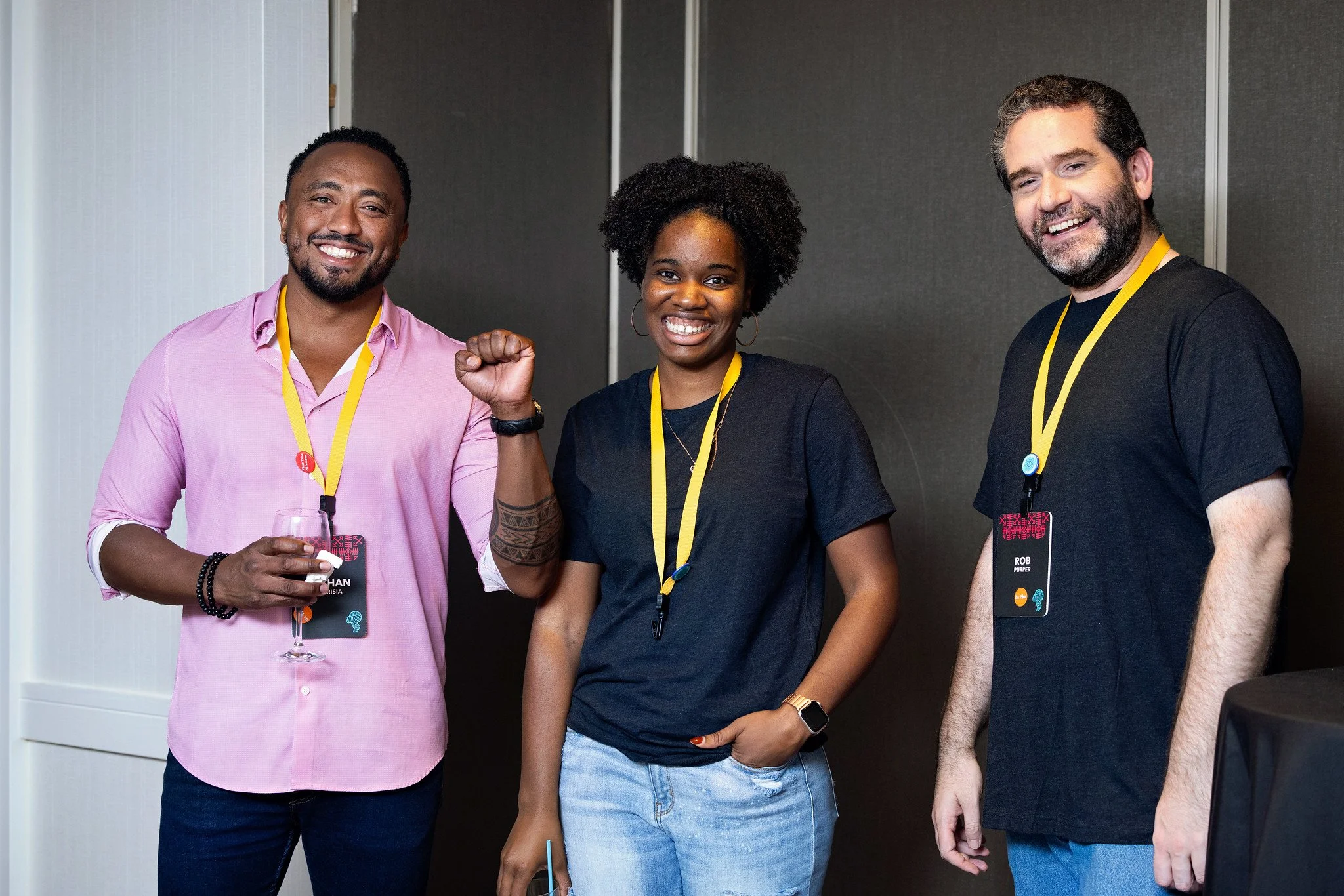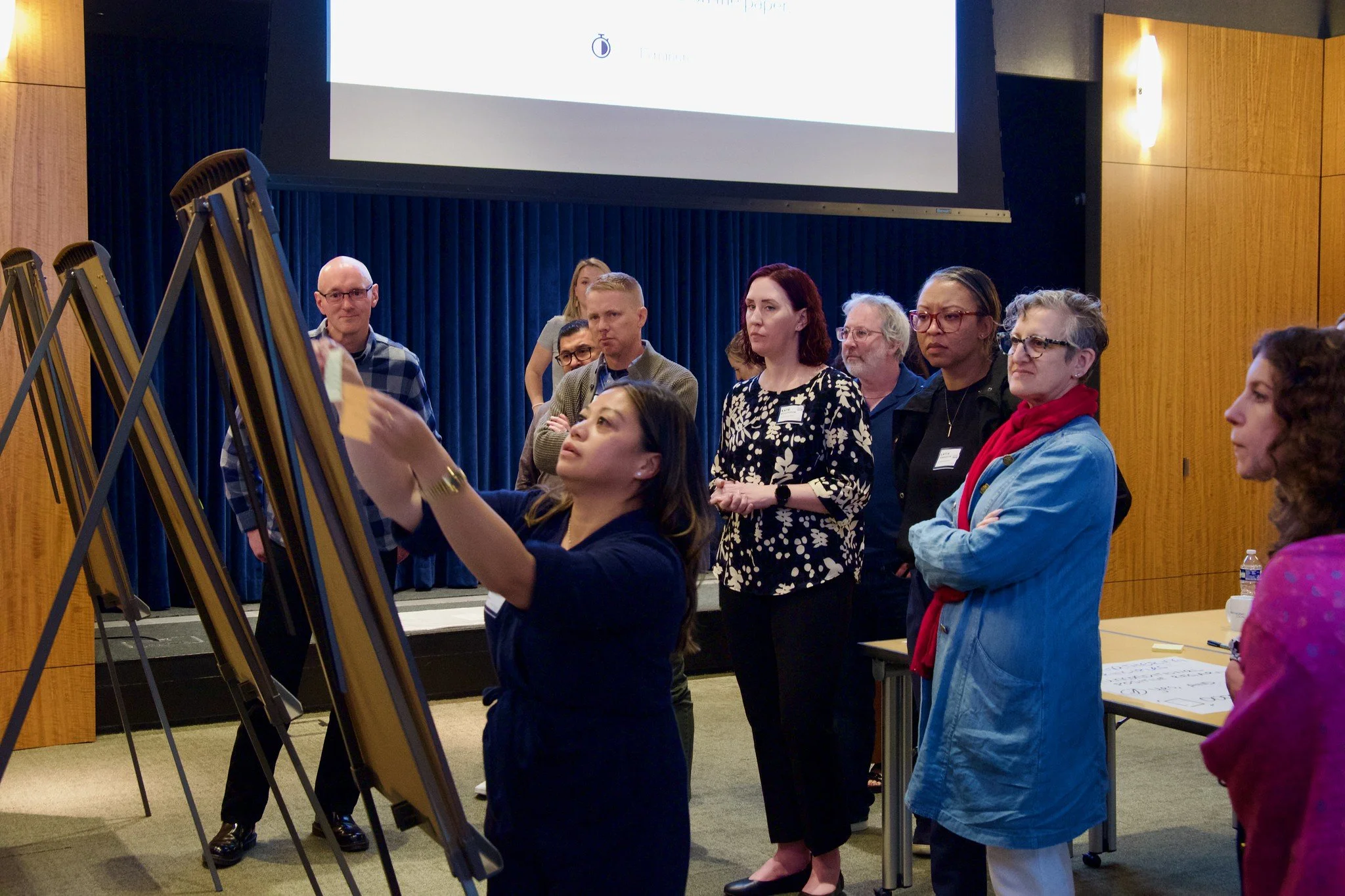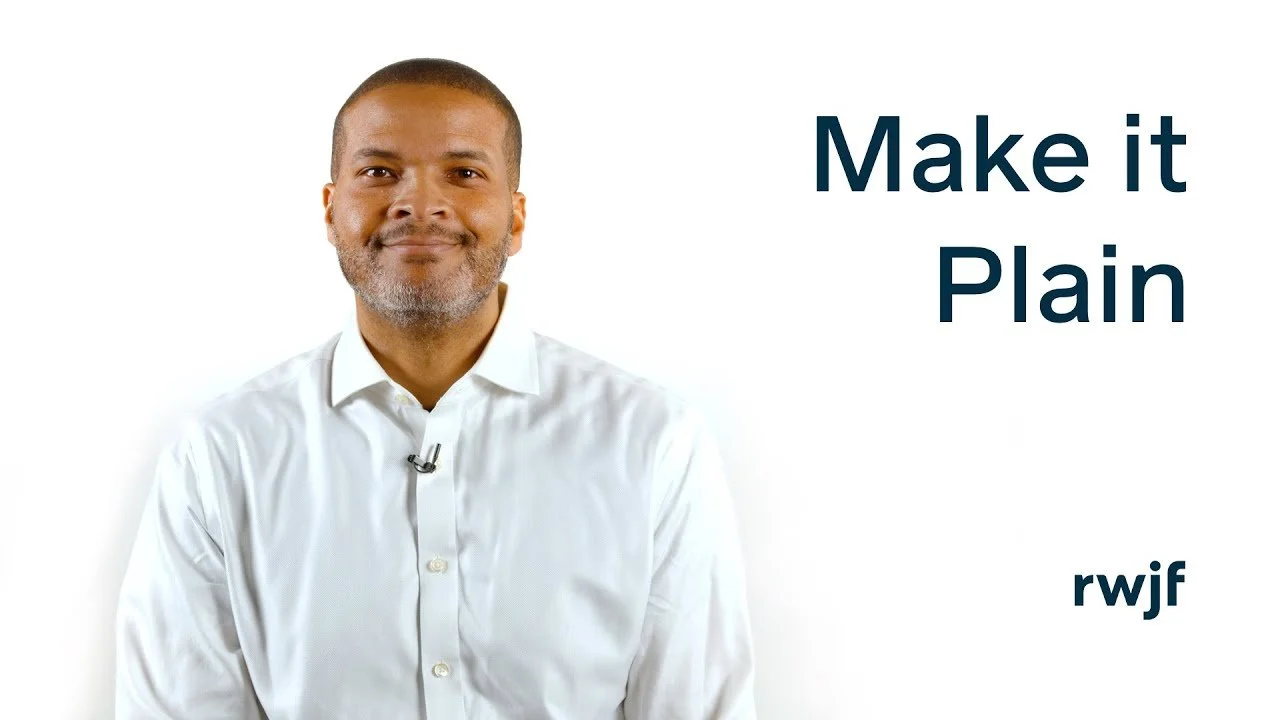
7 Steps
From Division to Action
This guide offers information and ideas to help you advance your organization’s goals in a climate of distrust, division, and disruption.
Millions of Americans are wondering what they can do to make a difference. Now is the time to engage people in meaningful conversation and purposeful action.
You’ll find insights from science, ideas from experts, and resources you can use to build trust, bridge divides, and encourage people to take productive action.
“To have an impact in this context, today’s communications efforts need to build trust, bridge divides, and help make breakthroughs possible.”
Jim Canales and Stefan Lanfer, Barr Foundation
Communications for Community Stanford Social Innovation Review
This guide shares practices from the fields of trust-building, political polarization, and civic engagement.
You can dig deeper with resources like these:
From Division to Action
7 Steps
Each section provides practical lessons and guiding principles from brain science and communications research, along with questions and resources to help you and your team explore solutions.
Step One
Step One: Sharpen Strategic Focus
Get Real: Focus on people with a real role to play.
Achieving impact with strategic communications starts with a clear-eyed view of your primary audience—the people who have a real role to play in achieving your goals.
In tumultuous times, that can be tough. Lots of voices are making lots of noise. Cut through the clutter by answering these questions:
Goal:
What are we trying to achieve?
Audience:
Who must take action to achieve it?
Objective:
What actions must they take?
Be super specific—the sharper your focus, the more likely you are to make an impact.
“A lot of it is helping an organization to clarify who their audience is—beyond the ‘general public.”
Tim Dixon,
More In Common
Assess current efforts.
Consider these questions to assess whether your current efforts have clear strategic focus.
Stop:
Are we focusing on audiences who aren’t essential to achieving the goal?
Start:
Who might we need to focus on more?
Early in the COVID-19 pandemic, many public health communicators issued broad messaging to the general public that encouraged people to get tested for the virus. Testing rates remained low. The Rockefeller Foundation sharpened its strategic focus on populations hit hardest by the virus, such as Black and Latino communities, as well as frontline health workers and parents with young children. The Foundation funded campaigns with messengers trusted by these audiences, like barbers, faith leaders, and bilingual community organizers. Tailoring messages and messengers to appeal to clearly defined audiences helped encourage millions of people to get tested regularly, enabling schools and businesses to reopen more safely and quickly.
Step Two
Step Two: Listen to Learn
Explore your assumptions.
We can’t really know what other people think or feel, but our brains try to understand and predict other people’s behavior. Snap judgments are often offbase. For example:
Attribution error is when we believe other people’s actions stem from their character or personality, not their external situation or circumstances. Defining people as the problem stokes distrust and division—and makes it harder to focus on solutions.
Confirmation bias is the tendency to focus on information that supports our beliefs—and ignore information that might contradict them. We can miss out on useful input that might improve the way we connect and communicate with others.
Projection bias is when we assume others think, feel, believe, and behave the same ways we do. Messages that “project” our own mindset onto others may fall flat.
These dynamics make for misfires in communication. Try to examine your own thinking—and put yourself in your audience’s shoes.
Assumptions:
What assumptions might we hold about members of our audience?
Motivations:
Why might they want to take action to advance our goals?
Obstacles:
Why might they not want to?
“The U.S. is plagued by a variety of societal divides across political orientation, race, and gender, among others. Listening has the potential to be a key element in spanning these divides.”
Listening to bridge societal divides,
National Institutes of Health
Less persuasion, more invitation.
People are more likely to change attitudes on a topic when they stop and think about how it applies to their own goals and values. Rather than trying to persuade your audience, it can be more effective to invite them to think about how your cause connects to their own aspirations about the kind of people they want to be.
The marriage equality movement achieved “durable attitude change” by inviting people to think about the issue in new ways, as explained in an article on “Aspirational Communication” in Stanford Social Innovation Review.
Invite:
How might we invite people to think about our cause in meaningful ways?
Step Three
Step Three: Address Misperceptions
Misperceptions drive division.
Studies by Beyond Conflict found that Democrats and Republicans often overestimate how much the “other side” dislikes them. A Democrat might believe Republicans deeply dislike them simply because they are a Democrat, even if this isn't true for all or most Republicans.
Correcting misperceptions—by opening people’s eyes to each other’s actual views—can reduce animosity.
See for yourself in this 4-minute video: America’s Divided Mind.
Identify misperceptions. Consider whether misperceptions are a problem for your cause.
What “We” Think:
What misperceptions might we hold about people on “the other side” of our cause?
What “They” Think:
What misperceptions might others have about our organization, community, people we serve, etc.?
Explore solutions. Consider ways to correct misperceptions.
One Small Step from StoryCorps pairs strangers with different views for a guided conversation. In one exchange, participants read each other’s bios and jumped to conclusions about who the other was. But once they talked, the stereotypes disappeared and they walked away with more understanding.
Where It’s Coming From:
Where might those misperceptions come from? Who or what might be driving them?
How To Correct It:
What kind of information or activities can we provide to correct misperceptions?
Step Four
Step Four: Engage Unlikely Allies
Americans aren’t always as divided as it seems.
Public opinion research often finds common ground on hot topics, despite news coverage and social media conversation that focuses on the loudest voices.
In-depth “audience segmentation” studies like The Hidden Tribes of America by More In Common dig deep into psychological dynamics to uncover different mindsets and motivations—which can open your eyes to new audiences and opportunities. It identified seven distinct groups, from “Progressive Activists" to “Politically Disengaged” to “Devoted Conservatives.”
The Pew Research Center’s Beyond Red vs. Blue: The Political Typology identified nine different types of Democrats and Republicans.
Potential Supporters:
Who might have an open mind on our issue?
Don’t write people off.
Conventional wisdom says to ignore the “opposition”—people you perceive to be on the “other side” of your issue. That’s not always a winning strategy. Unlikely alliances can surprise people, break through the noise, and open minds to your message.
The Florida Rights Restoration Coalition won a landslide victory for a constitutional amendment that restored voting rights to 1.5 million formerly incarcerated people. FRRC’s campaign succeeded by mobilizing people across the political spectrum to volunteer, donate, and vote for its ballot measure—without writing anyone off.
Unlikely Allies:
Whom do we see as “opponents,” who might actually support our cause?
Mobilize messengers trusted by your audiences.
You don’t need to go it alone. People you serve, board members, partner organizations, major donors, business leaders, and others can be effective messengers.
In Georgia, two surprising groups teamed up to support solar energy: the Sierra Club, an environmental group, and Tea Party activists, known for their conservative views. They formed the “Green Tea Coalition” to push for more access to rooftop solar power. While the Sierra Club cared about clean energy and the environment, the Tea Party focused on giving people more control over their energy choices. What made the coalition especially powerful was that each group spoke to its own audience, ensuring that conservative and liberal lawmakers alike heard the message from voices they trusted. Together, they helped stop rules that would have made it harder for people to install solar panels on their homes.
Trusted Messengers:
Who supports your goal and is trusted by your audience?
Step Five
Step Five: Convene Community Conversations
Think local.
Discord is often driven by national politics, culture, and media. Meeting people close to home and face-to-face helps cut through the noise, counter negative narratives, and focus on real solutions.
Research on language used to talk about local and national politics found that discussions of national politics were “abstract and polarized, while discussions of local issues were more focused on “concrete, locally shared knowledge.” Conversations about national politics lead to more engagement with content—but also greater animosity among people with different perspectives.
Assess:
Are we engaging people at a local-level?
Create connections.
Authentic conversations among people with different backgrounds and beliefs can enable people to recognize their shared humanity, create a sense of common purpose, and encourage cooperative action.
Healing Starts Here, an initiative of the New Pluralists, supported 32 locally led projects to help people in communities across the country “grappling with deep disagreements” and shares lessons for “building relationships, solving shared problems, and showing what it means to come together — in ways that are rooted in their local contexts, talents, and traditions.”
Local affiliates of UnidosUS organized Recipe for Unity dinner parties to connect community leaders who did not know each other. The dinners were designed to celebrate each area’s diversity, while lifting up common interests and concerns.
Connection:
Who might we bring together in our community?
“Local work has a lot of opportunity to build and rebuild trust around issues that are much closer to folks’ communities.”
Replenishing Trust
by Spitfire Strategies
Explore shared aspirations—and ways to work together.
Working toward a shared goal can go a long way toward building trust and bridging divides among people and organizations. Find one thing you can work on together and do that. You’ll build trust that can open the door to finding common ground on issues you don’t see eye-to-eye on.
Heineken’s Worlds Apart campaign brought this insight to life by bringing together people with opposing views on controversial issues—and putting them to work.
More In Common’s 2025 study, The Connection Opportunity, found that “most Americans value and are interested in connecting across difference—especially when working toward a shared goal.”
Collaboration:
What might be a common goal people can work on together?
Step Six
Step Six: Speak Plainly—and Strategically
Watch your language.
At a time when many issues and words get caught up in polarizing politics, people may try to guess what “side” you’re on by the words you use. Terms you might not think are “political” might be getting in your way.
The Civic Language Perceptions Project by PACE studied words used to talk about civic life in America—and found that words like “democracy” and “diversity” landed differently among people with different political beliefs and backgrounds, while words like “community” and “freedom” resonated with people across the political spectrum.
“Philanthropy’s Trigger Words” in the Chronicle of Philanthropy points to six “moral communication styles” in the nonprofit and philanthropic sector that can create “disconnects that frequently derail even well-intentioned work.”
Buzzword Check:
What words are we using that might create polarizing responses?
Cut the jargon.
People are more likely to trust, recall, and take action on information they understand easily. Jargon is a special language used by experts and organizations that makes communication easy for them—but it can sound like a foreign language to everyone else.
An environmental organization gathered scientists and local residents in the Florida Keys to find common ground on policies to protect the area’s coral reefs. Jargon sabotaged the effort. Local residents complained that experts talked “over their heads”—with words like “eutrophication” instead of “pollution” creating confusion and distrust.
Jargon Check:
What jargon are we using that won’t translate to our audience?
“How do we appeal to a politically broad audience without sending unintended signals that stop a conversation before it even begins?”
The Civic Language Perceptions Project
Emphasize the positive.
The way you put people in the picture—in your mind and your messaging—is critical to encouraging trust and engagement. If people think you look down on them or see them as a problem, you won’t get far.
Asset-framing is defining people in terms of their strengths, aspirations, contributions, and other positive attributes. Deficit-framing is the opposite—defining people in terms of their problems, needs, or challenges. People need to feel understood and respected in order to trust your organization or respond to a call to action.
This example from the asset-framing expert Trabian Shorters, founder of BMe Community, shows how a nonprofit shifted from deficit to asset framing:
Deficit Framing
Creates Negative
Associations
“Our program helps at-risk youth in high-crime neighborhoods stay on track, graduate high school and avoid becoming a negative statistic."
Asset Framing
Creates Positive
Associations
“Our mission is to equip young people who are hungry for an education to overcome obstacles and achieve their dreams for themselves and society.”
Asset Frame:
Are we seeing and describing people in positive or negative ways?
Step Seven
Step Seven: Point to Problem-Solvers
Show people taking positive action.
Normative framing—messages and stories that highlight members of your audience taking productive actions—can be powerful drivers of positive behavior. That’s because we’re more likely to take actions we believe other people are taking—especially actions seen as acceptable or appropriate within our local community or social circles.
The My Vote Creates Change campaign by the California Endowment shared stories of young people and other target audiences taking action, as a way to encourage “friends, family and neighbors to make their voices heard.”
Problem Solvers:
Who is already taking productive, pragmatic action on our issue?
Highlight people who changed their minds on a tough issue.
People are more likely to think through a controversial topic if they see others doing it. Sharing stories of “converts” to a cause can inspire others to take a fresh look at the issue.
In its successful campaign to win equal marriage rights for same-sex couples, Freedom to Marry ran video ads featuring voters talking about how they changed their minds on the topic—encouraging others to take their own “journey” and think through the issue for themselves.
Converts:
Who has changed their position on our issue?
Lift up bridge-builders to counter polarization.
It can feel scary for people to consider engaging with those they perceive to be different or opposed to them. To feel safer, it can help for them to see people on “their side” reaching across divides.
Beyond Conflict’s How Do We Get Through This? podcast features leaders who “shaped their countries’ futures at times when everything was at stake”—including opponents who reached across battle lines to end Apartheid in South Africa and war in Northern Ireland.
Interfaith America and New Pluralists invited community leaders to share stories of “connecting across difference” in op-eds published across the country—resulting in a “tapestry of stories showcasing people working together.”
Bridge Builders:
Who is engaging with people across divides in our community?
Download the 7 Steps Guide
Print it, post it, or keep it by your desk. A practical, research-based framework you and your team can use every day to build trust and bridge divides.
Learn more
Examples
These examples show how information and questions in this guide can help your organization map out strategies for building trust, bridging divides, and engaging people in productive action.
Reframing Career Education for the Next Generation
Career and technical education programs teach skills for careers in fields like healthcare, information technology, trades, and manufacturing. These programs offer powerful, practical pathways to success, often combining classroom learning with hands-on experience and connections to employers. Yet many young people overlook them, because they’ve never heard of them, don’t understand what they offer, or believe they’re “less than” college. Those misperceptions are holding students back from career paths that align with their interests and lead to respected, well-paying jobs.
Here’s how you might use this playbook to craft a communications plan that inspires more students and parents to explore these opportunities.
-
GOAL: What are we trying to achieve?
Increase enrollment in career education and training programs
AUDIENCE: Who must take action to achieve it?
14–24 year olds deciding on a career, and their parents
OBJECTIVE: What actions must they take?
Students and their parents or guardians must research local career and technical education programs, talk to a counselor or program advisor, and complete the steps to apply to a program that fits their interests and goals.
STOP: Are we focusing on audiences who aren’t essential to achieving the goal?
Spending too much time talking to people who aren’t making the decision, like high school guidance counselors or policy experts
START: Who might we need to focus on more?
Focusing on students who are unsure about their next step, as well as their parents or guardians who help guide their decisionmaking
-
ASSUMPTIONS: What assumptions might we hold about members of our audience?
They aren’t interested in planning for their future
They only see career and technical training as a fallback
They see college as the only legitimate option after high school
MOTIVATIONS: Why might they want to take action to advance our goals?
They’re drawn to practical steps that lead to real careers
They want a stable path forward in an uncertain world
They’re also looking for purpose, not just a paycheck
OBSTACLES: Why might they not want to?
They don’t see people like them in these programs
They think it’s not as respected as college
They’re unsure what the path actually leads to
They don’t know where to start or who to trust
LISTEN: How might we create opportunities to listen and learn?
Partner with youth-serving organizations to hear hopes and concerns
Host small-group conversations with students who are undecided about their next step
Use social media polls to hear how young people think about their future
INVITE: How might we invite people to think about our cause in meaningful ways?
Ask reflective questions like “What kind of future do you want and how can we help you get there?”
Share real stories of young people who found purpose and pride through career training programs
-
WHAT “WE” THINK: What misperceptions might we hold about people on “the other side” of our cause?
Students have already rejected career and technical education before considering it
Parents only value four-year college degrees
Traditional educators and guidance counselors don’t value or understand career and technical education programs
WHAT “THEY” THINK: What misperceptions might others have about our organization, community, people we serve, etc.?
Career training is only for students who “can’t cut it” in college
Career and technical education programs lead to low-wage, low-respect jobs
Career and technical education programs limit your future opportunities
WHERE IT’S COMING FROM: Where might those misperceptions come from? Who or what might be driving them?
Lack of visibility into real outcomes of career and technical education programs, which lead to outdated ideas about the benefits of these programs
School systems that prioritize 4-year college as the best option for everyone
HOW TO CORRECT IT: What kind of information or activities can we provide to correct misperceptions?
Share real stories of career and technical education graduates in all kinds of respected, high-wage careers
-
POTENTIAL SUPPORTERS: Who might have an open mind on our issue?
Young people who want real-world experience
Parents concerned about rising college debt and an uncertain job market
Guidance and career counselors looking for more relevant, engaging options for students
Employers who struggle to find skilled workers
UNLIKELY ALLIES: Whom do we see as “opponents,” who might actually support our cause?
College-educated parents who understand that college might not be the best path for their kids
Traditional college advocates who believe career and technical education programs can prepare students for college
TRUSTED MESSENGERS: Who supports your work and is trusted by your audience?
CTE program students and graduates
Guidance counselors, coaches, teachers, and other high school mentors
Local employers
Parents of career and technical education students and graduates
-
CONNECTION: Who might we bring together in our community?
Students, parents, and recent career and technical education grads
Local employers with high school mentors, faith leaders, and other mentors who influence students
COLLABORATION: What might be a common goal people can work on together?
Work with local employers and chambers of commerce to make sure local students are first in line for jobs in their area
-
BUZZWORD CHECK: What words are we using that might create polarizing responses?
“Alternative pathway” (can sound like second-best)
“Workforce pipeline” (can feel dehumanizing or corporate)
“Equity” or “access” (important, but can signal political alignment)
JARGON CHECK: What jargon are we using that won’t translate to our audience?
“Stackable credentials”
“Postsecondary options”
“Labor market alignment”
“Pathway navigation tools”
ASSET FRAME: Are we seeing and describing people in positive or negative ways?“Young people who want to build a strong future”
“Parents who want the best for their kids”
-
PROBLEM SOLVERS: Who is already taking productive, positive action on our issue?
Students enrolling in career and technical education and speaking proudly about their experience
Employers offering apprenticeships or mentoring programs
Schools integrating hands-on training into traditional coursework
BRIDGE BUILDERS: Who is engaging with people across divides in our community?
Local business leaders working with school districts to design training programs
CTE alumni speaking to students and parents from different backgrounds
Building Vaccine Confidence
-
GOAL: What are we trying to achieve?
Increase vaccination rates to reduce COVID-19 transmission and save lives.AUDIENCE: Who must take action to achieve it?
People who are vaccine hesitant—especially frontline workers, parents, healthcare
workers, and Black and Latino communitiesOBJECTIVE: What actions must they take?
Get vaccinated against COVID-19 or take precautions like masking and regular testing if they’re not willing to be vaccinatedSTOP: Are we focusing on audiences who aren’t essential to achieving the goal?
Relying on top-down messages from political or institutional voices that lack trust with
our target audienceSTART: Who might we need to focus on more?
Amplifying trusted messengers (e.g., local healthcare workers, community
leaders, peers) who can share persona -
ASSUMPTIONS: What assumptions might we hold about members of our audience?
They’re uninformed or misinformed and just need “correct facts”
They distrust science or government
They are influenced only by politics or conspiracy theories
MOTIVATIONS: Why might they want to take action to advance our goals?
They want to protect their families and communities
They value personal freedom and control over their health decisions
They want to return to work, school, worship, and everyday life—in a way that’s safe
OBSTACLES: Why might they not want to?
Lack of trust in government, pharmaceutical companies, or the healthcare system, often based on lived experience
Overwhelming misinformation and conflicting guidance
Logistical barriers (e.g. transportation, time off work, childcare)
LISTEN: How might we create opportunities to listen and learn?
Partner with community organizations, faith leaders, and trusted local institutions to hold listening sessions
Monitor social media conversations to surface concerns and patterns
Use surveys to gather honest feedback
INVITE: How might we invite people to think about our cause in meaningful ways?
Create online spaces for community members to share their concerns with experts who can help them think through their decision
-
WHAT “WE” THINK: What misperceptions might we hold about people on “the other side” of our cause?
They’re selfish or irresponsible for not getting vaccinated
They’re being manipulated by misinformation and can’t be reasoned with
WHAT “THEY” THINK: What misperceptions might others have about our organization, community, people we serve, etc.?
We’re trying to push an agenda or shame them into complying
We don’t understand their fears or their communities
WHERE IT’S COMING FROM: Where might those misperceptions come from? Who or what might be driving them?
Distrust stemming from a legacy of mistreatment by the healthcare system
Polarizing media coverage and political talking points that frame public health as partisan
Messaging that centers fear and mandates
HOW TO CORRECT IT: What kind of information or activities can we provide to correct misperceptions?
Share real, local stories of people who were hesitant but made the choice to protect loved ones
Lead with empathy and validate concerns before offering guidances
Use trusted community leaders to carry the message
-
POTENTIAL SUPPORTERS: Who might have an open mind on our issue?
Parents who want to protect their children and return to in-person school safely
Essential workers who want to avoid time off work due to illness
Community health workers already answering questions and navigating concerns daily
UNLIKELY ALLIES: Whom do we see as “opponents,” who might actually support our cause?
Small business owners who want a stable economy and healthy workforce
Faith-based leaders who see health as part of caring for one another
Local elected officials or sheriffs who are trusted public voices in their towns
Youth leaders, especially those with influence on social media
TRUSTED MESSENGERS: Who supports your work and is trusted by your audience?
Faith leaders
Barbers and hairstylists
Bilingual community leader
-
CONNECTION: Who might we bring together in our community?
Small business owners and community health workers
Formerly hesitant patients and frontline workers
Public health officials and barbershop owners
COLLABORATION: What might be a common goal people can work on together?
Protect the community and return to the things people care about—family gatherings, school, work, worship, and public events
-
BUZZWORD CHECK: What words are we using that might create polarizing responses?
“Public health mandate” (may sound coercive)
“Follow the science” (can feel condescending or dismissive)
“Equity” (Important, but may signal partisan or institutional framing if not explained in plain terms)
JARGON CHECK: What jargon are we using that won’t translate to our audience?
“mRNA technology”
“vaccine uptake”
“community immunity”
“vaccine efficacy rates”
ASSET FRAME: Are we seeing and describing people in positive or negative ways?
“People working hard to keep their families safe”
“Families making careful choices in a confusing time”
-
PROBLEM SOLVERS: Who is already taking productive, positive action on our issue?
Clinic staff who spend extra time answering questions with empathy and patience.
Faith leaders who hold vaccine information sessions
Community-based nonprofits that provide transportation for vaccination appointments
BRIDGE BUILDERS: Who is engaging with people across divides in our community?
City council members on both sides of the aisle supporting protecting local businesses by encouraging people to get vaccinated
A local employer partnering with a clinic to host a vaccine day for staff and families
About
About This Guide
To advance your mission, you need to motivate and mobilize people. That can be hard to do in a climate of distrust, division, and disruption.
Distrust of organizations makes it harder to get things done. Animosity among different groups of people creates harsh divides. Those who want to make a difference don’t know what to do.
Navigating this terrain can be frustrating and overwhelming. This guide can help you chart new paths forward.
It’s based on interviews with experts and insights from research in relevant fields. It shares learning and suggests questions you can use to assess your communications—and to engage colleagues in exploring solutions.
-
Nicole Bronzan, Council on Foundations
Tim Dixon, More in Common
Vanice Dunn, PolicyLink
Celeste Ford, Carnegie Corporation
Kristen Grimm, Spitfire Strategies
Emily Janssen, Storycorps
Daniella Gibbs Leger, Center for American Progress
Amy McIsaac, Philanthropy for Active Civic Engagement
Desmond Meade, Florida Rights Restoration Coalition
Sheena Meade, Clean Slate Initiative
Matthew M. Minczeski, The Pittsburgh Foundation
Daphne Moore, Moore Strategies
Tim Phillips, Beyond Conflict
Daniel Pink, Author
Gabriel Rodriguez, Spitfire Strategies
Trabian Shorters, BMe
Jennie Zioncheck, The Pittsburgh Foundation
-
Beyond Conflict
Bloomberg Harvard City Leadership
BMe Community
Braver Angels
Council on Foundations
Florida Rights Restoration Coalition
Interfaith America
Listen First Project
Living Room Conversations
More in Common
National Institutes of Health
New Pluralists
Othering & Belonging Institute at UC Berkeley
Pew Research Center
Philanthropy for Active Civic Engagement
Robert Wood Johnson Foundation
Spitfire Strategies
Stanford Social Innovation Review
StoryCorps
The California Endowment
The Chronicle of Philanthropy
The Communications Network
The Skillman Foundation
UnidosUS
WebFirst
Welcoming America


